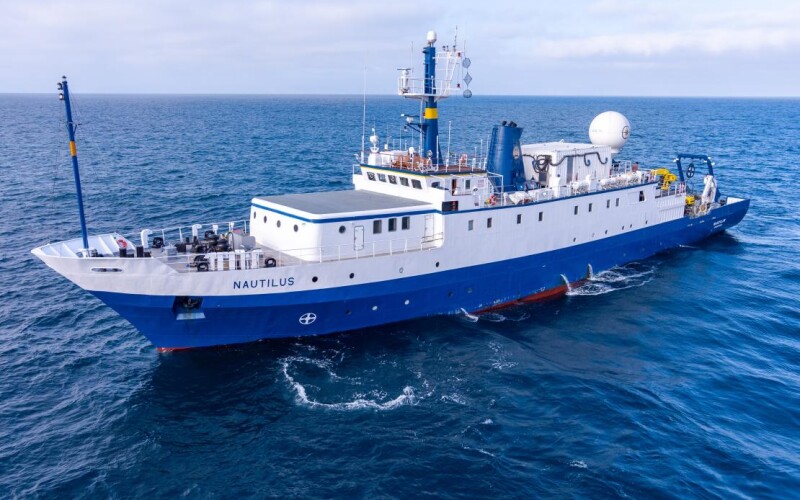The Ocean Exploration Trust set out its exploration vessel Nautilus Aug. 10 on an expedition include of midwater ecosystems across American Samoan waters.
The expedition is dubbed “E Mamana Ou Gataifale I,” for “your waters have power” in Samoan. The venture will conduct multi-vehicle exploration of midwater ecosystems across American Samoan waters from the 211’x34.5’ Nautilus.
“The midwater ocean twilight zone is an important source of food for many marine animals, including commercial species like tuna and swordfish,” according to a summary from the Ocean Exploration Trust and partners.
“This expedition aims to cooperatively explore this zone in priority areas identified by the American Samoan management and science community. The expedition, funded by NOAA Ocean Exploration via the Ocean Exploration Cooperative Institute (OECI), will visit Vailuluʻu Seamount in the National Marine Sanctuary of American Samoa (NMSAS), as well as other unexplored seamounts, to learn more about how open ocean and seafloor habitats interact.”
“It’s great to have the Nautilus crew back in American Samoa after five years. We're looking forward to seeing what’s changed underwater, the data gathered, and involving our local community in all the explorations,”
Vailuluʻu Seamount is the only hydrothermally active seamount in American Samoa. Discovered in 1975, Vailuluʻu Seamount has since been mapped by multiple expeditions using high-resolution multibeam sonars but has not been explored since 2019. This expedition will return for the first surveys of the area since a 2022 cluster of seafloor earthquakes.
Over the last three years, the OECI has been advancing how multiple ocean exploration technologies can be integrated aboard E/V Nautilus, and this year, partners bring these new capacities to American Samoa. This expedition will utilize autonomous underwater systems like Woods Hole Oceanographic Institution’s hybrid remotely operated vehicle Mesobot and the University of Rhode Island’s Deep Autonomous Profiler Lander deployed from the ship and the University of New Hampshire’s uncrewed surface vehicle DriXoperated from shore in Pago Pago.
 DJI_0029.jpeg.medium-cropped.800x500.jpg)
The team of STEAM professionals will also connect directly to classrooms via free educational Q&A interactions from the onboard broadcast studio.
The E Mamana Ou Gataifale I expedition plan was developed with input from American Samoan resource managers, scientists, educators, cultural practitioners, and other ocean stakeholders, including through a March 2024 workshop convening government and agency representatives at the Tauese P.F. Sunia Ocean Center in Utulei. Expedition naming is part of a collaborative effort to appropriately reflect American Samoan culture and values across the expedition.
Mapping and ROV operations on the upcoming expedition in unexplored areas will directly contribute to the US National Strategy for Ocean Mapping, Exploration, and Characterization, the UN Decade of Ocean Science for Sustainable Development, and the Nippon Foundation and General Bathymetry Chart of the Ocean Seabed 2030 Project, a multi-national initiative that aims to map the global seafloor by 2030.
.jpeg.medium-cropped.800x500.jpg)





